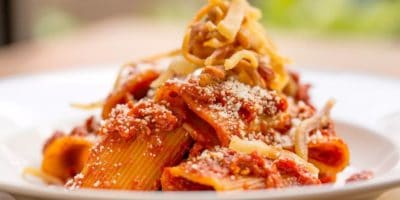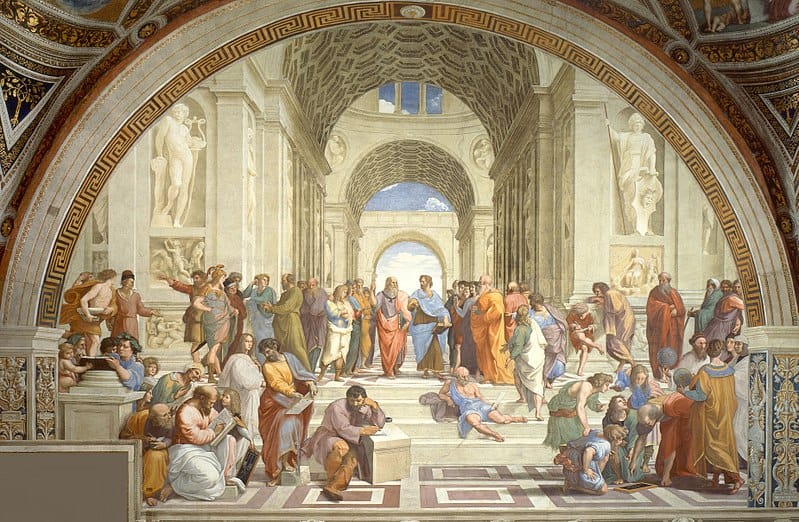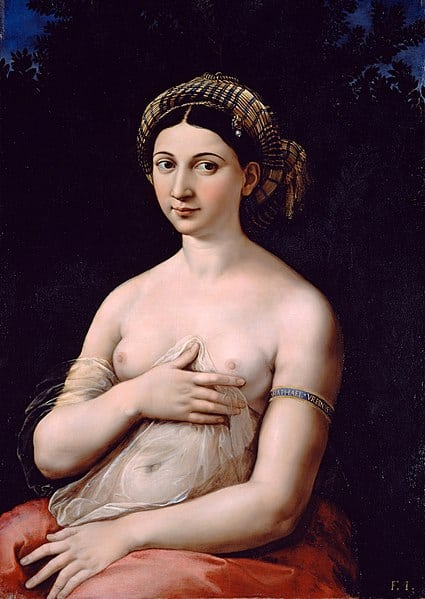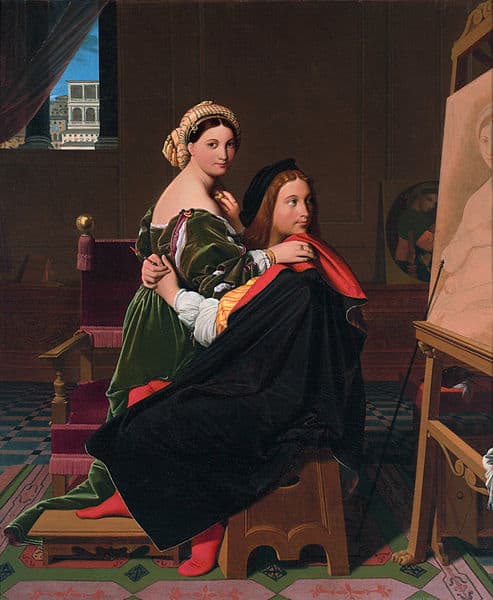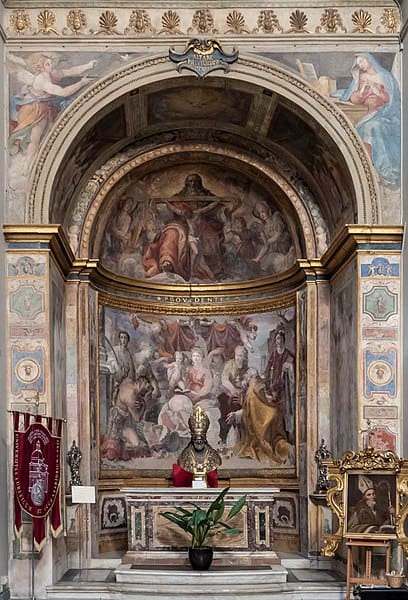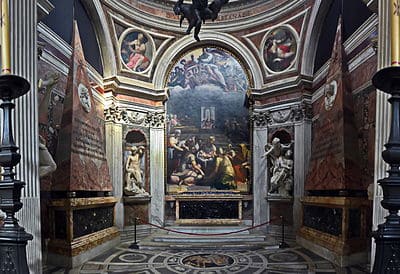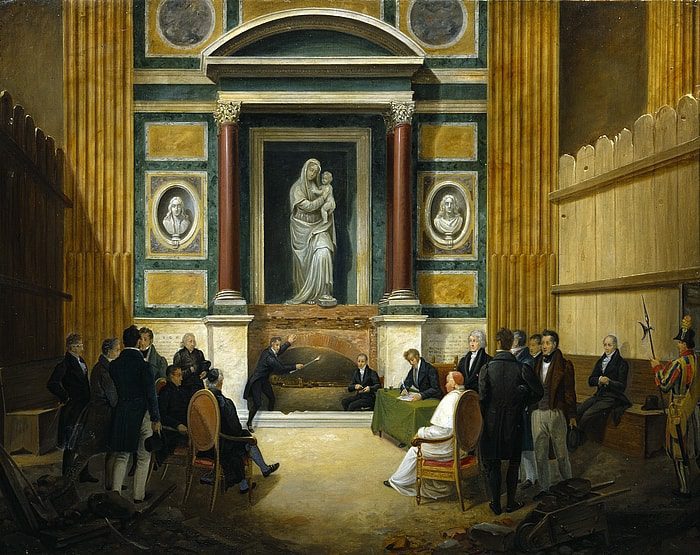Top 6 Interesting Facts about Renaissance Artist Raffaello Sanzio
Teenage Mutant Ninja Turtles Michelangelo, Donatello, Leonardo and Raphael taught all millennials that those four Renaissance artists were the real deal. “If the ninja turtles were named after you, then you must have been pretty awesome,” 1980s and 1990s kids would say. And that’s a true story.
While Donatello was an acclaimed sculptor that died few years before Michelangelo, Leonardo da Vinci and Raphael started making their art; these last three Italian artists simultaneously created wonders and formed what is known as the Trinity of Great Men of the Renaissance.
Sometimes, it’s hard for us to remember that these great men were much more than their acclaimed work. They were humans with ups and downs like anyone else and with a life that went beyond their most famous masterpieces, but we don’t know much about that.
Today, I want to dig deeper into the life of one of them: the young and charming Raphael! So here are the top 6 interesting facts about Raphael’s life.
1) Michelangelo hated Raphael
Originally named Raffaello Sanzio (or Raphaello Santi), Raphael was an Italian painter and architect born in Urbino in 1483. Although he moved a lot across different cities, he spent some time in Florence before finally settling down in Rome. Both cities had great influence on his art, marking what became known as Raphael’s Florentine and Roman periods.
In Rome, his serene and clear style charmed two different Popes, Julius II and his successor Leo X. Despite still not enjoying immense fame at the time, Raphael beat many experienced and popular artists and was commissioned by Julius II to paint what would be the Pope’s private library at the Vatican Palace. While Raphael worked at the private library, other artists worked in other rooms. Michelangelo was one of them; he had been commissioned to fresco the Sistine Chapel.
Some rivalry might be understandable as Raphael, Leonardo da Vinci and Michelangelo – three geniuses – often worked in the same city and competed for the same commissions. However, Michelangelo seems to have taken the dispute with his competitors to a more aggressive level.
Michelangelo accused Raphael of plagiarism
Raphael was 31 years younger than Leonardo and eight years younger than Michelangelo, so by the time he started painting, Leonardo and Michelangelo already had a series of masterpieces on display. Their work was a reference to young Raphael, whose style presented many elements applied by his elder colleagues.
When Raphael gained the hearts of the Popes, Michelangelo was not so happy about it. There were times that, when competing for the same commission, Raphael’s charming personality and friendship with the supreme pontiff – and talent, of course – would lead him to be favored over Michelangelo. On top of that, art critics would often compare both artists, sometimes suggesting that Raphael’s technique was superior.

Detail of The School of Athens showing Heraclitus and Michelangelo Buonarroti as one person. By Raphael. (1511)
Michelangelo showed no fair play spirit and openly resented Raphael. The rivalry between the two artists became pretty obvious when Raphael mocked his rival by including a man with Michelangelo’s features in his most famous fresco “The School of Athens”, located in the Vatican Palace. Critics say that the man is likely a representation of Heraclitus of Ephesus, a Greek philosopher known as “The Obscure”, and having him painted with Michelangelo’s features was clearly a reference to the artist’s bitter character.
Raphael was never forgiven. After he died, Michelangelo suggested that Raphael had gotten everything he knew about art from him, and accused him of plagiarism.
You can buy entrance tickets to visit “Raphael’s Rooms” in the Vatican Palace at the Vatican Museum’s official website. Or have a virtual tour!
2) Raphael was a notorious womanizer
Raphael had many lovers. According to Giorgio Vasari, an Italian painter and architect who wrote the biography of many Renascence artists, he was a “very amorous man and affectionate towards the ladies” – a very gentle way of saying ‘womanizer’.
From all his lovers, the most well-known is Margherita Luti, the daughter of a baker named Francesco Luti. She modeled for Raphael and inspired the features of many of his female subjects. He also painted a portrait of her named ‘La Fornarina’, made between 1518 and 1519. On this particular painting, Margherita wears a lace around her arm with the painter’s name on it.
‘La Fornarina’ is located at the National Gallery of Ancient Art at Via delle Quattro Fontane, 13.
Some believe they were secretly married, but that has never been proved. However, there are enough signs that Raphael was deeply in love with her.
About her life, little is known. A document discovered in 1897 suggests that she would have retired to the Convent of Santa Apollonia four months after the painter’s death.
3) Raphael became a fiancé, but never a husband
In 1514, Raphael got engaged to Maria Bibbiena, niece of his friend Cardinal Medici Bibbiena. Scholars believe the painter didn’t want to make such commitment, but had to accept it because of the influence of the cardinal.
Both Raphael and Maria died in the year of 1520 without exchanging vows. The long years of engagement, uncommon in those circumstances, show Raphael’s lack of enthusiasm towards the wedding – his eyes were all over Margherita.
Despite there never been a wedding, Maria Bibbiena was buried alongside Raphael in the Pantheon as his eternal fiancée.
4) Raphael was one of Rome’s most important architects
When we think about Raphael, we tend to immediately label him as a painter. Yet, his talent and career went beyond canvases and frescoed walls. For few years, he was considered one of Rome’s most important architects.
When Donato Bramante, architect of Pope Julius II, died in 1514, Raphael intensified his activities as an architect at some of the Church’s projects, such as the Sant’Eligio degli Orefici Chapel, initially designed by him.
Although the chapel was completed by two different architects, Baldassarre Peruzzi and Bastiano da Sangallo, its interior still holds Raphael’s designs.
The Sant’Eligio degli Orefici Chapel is located at Via di Sant’Eligio, 9.
Another project was the extension of the Basilica of Santa Maria del Popolo, one of the most important basilicas in Medieval and Renascence Rome. Raphael was commissioned by the pope to design a mausoleum that would replace a chapel on the basilica’s left side.
The chapel was acquired by the pope’s friend Agostino Chigi, a wealthy Sienese banker who wished to build a mausoleum for himself and his heirs in a chapel inside of the basilica. He dedicated the chapel to the Madonna of Loreto, and Saints Augustine and Sebastian.
The Chigi Chapel, or Chapel of the Madonna of Loreto, as it was called, is one of the few religious projects of Raphael that still hold almost all his original designs.
The Basilica of Santa Maria del Popolo is located at Piazza del Popolo, 12.
On August 1, 1514, Raphael was confirmed as one of the architects responsible for the reconstruction of the Saint Peter’s Basilica. When architects Donato Bramante, Giuliano da Sangallo and Fra Giocondo died between 1514 and 1515, he made some changes on the original design.
After his death, many other changes were made, including the more significant ones made by Michelangelo in 1547, which constitute the majority of the final structure. Little remains from Raphael’s plan, but being among the names commissioned for the reconstruction of the basilica certainly shows how much faith was put on his skills as an architect.
Saint Peter’s Basilica is located at Piazza San Pedro, Vatican City.
In addition to religious projects, Raphael also designed luxurious palaces inspired by Donato Bramante, from whom he learned a lot.
5) Raphael’s personality was captivating
There is enough evidence that Raphael was a man of refined manners and extrovert character. His etiquette, which facilitated his business networking, is thought to be the result of growing up among aristocracy, as his father, Giovanni Santi, was an important artist himself who worked as court painter to the Duke of Urbino.
His amicable personality is also pointed as one of the reasons why his workshop was composed of over 50 pupils, which was a much higher number than that of other artists’ workshops. His pupils often finished his commissions based on his drawings while he focused on new projects.
6) Rumor has it, Raphael died of excessive sex
Raphael died on a Good Friday, on April 6, 1520 (possibly his 37th birthday). He died after being consumed by a fever whose cause remains a mystery.
According to Giorgio Vasari, the fever would have been caused by excessive sex with Margherita Luti. The painter and art historian suggested that, when examined by a doctor, Raphael hid the cause of his fever and was wrongly medicated, which led to his death. Although Vasari’s version rapidly spread, there has never been any scientific evidence to prove his allegation.
Before passing, Raphael had time to put his affairs in order and express his desire to be buried in the Pantheon, a pagan construction dating back to the 2nd century BC that was later turned into a Christian temple by the Catholic Church.
Pope Leo X, who was very fond of Raphael, promptly fulfilled his wish. His funeral was attended by a great crowd.
In 1833, Pope Gregory XVI ordered that the grave be opened to verify the body’s existence. A skeleton was found and those present determined they belonged to Raphael. The event was registered by Francesco Diofebi, who painted ‘The opening of Raphael’s grave in Pantheon 1833’.
Until now, thousands of people inspired by Raphael’s art visit his mausoleum every day.
The Pantheon is located at Piazza della Rotonda.
Planning a trip to Paris ? Get ready !
These are Amazon’s best-selling travel products that you may need for coming to Paris.
Bookstore
- The best travel book : Rick Steves – Paris 2023 – Learn more here
- Fodor’s Paris 2024 – Learn more here
Travel Gear
- Venture Pal Lightweight Backpack – Learn more here
- Samsonite Winfield 2 28″ Luggage – Learn more here
- Swig Savvy’s Stainless Steel Insulated Water Bottle – Learn more here
Check Amazon’s best-seller list for the most popular travel accessories. We sometimes read this list just to find out what new travel products people are buying.




